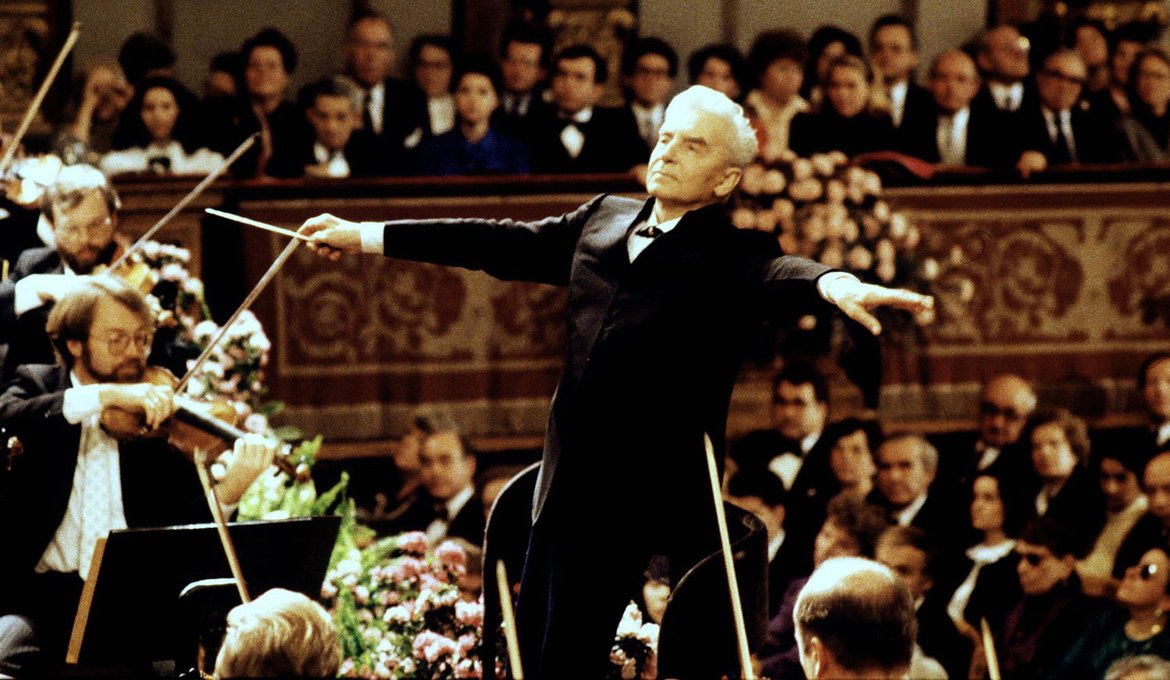IN NOVEMBER LAST YEAR, the latest work from legendary Japanese architect Tadao Ando was unveiled in Melbourne’s city-center Queen Victoria Gardens. Ando is known for the purity of his design, but the Melbourne structure is arguably the purest he’s ever produced. It’s the tenth edition in a project called MPavilion, an initiative funded and spearheaded by immensely successful Australian fashion businesswoman, patron of the arts and philanthropist, Naomi Milgrom.
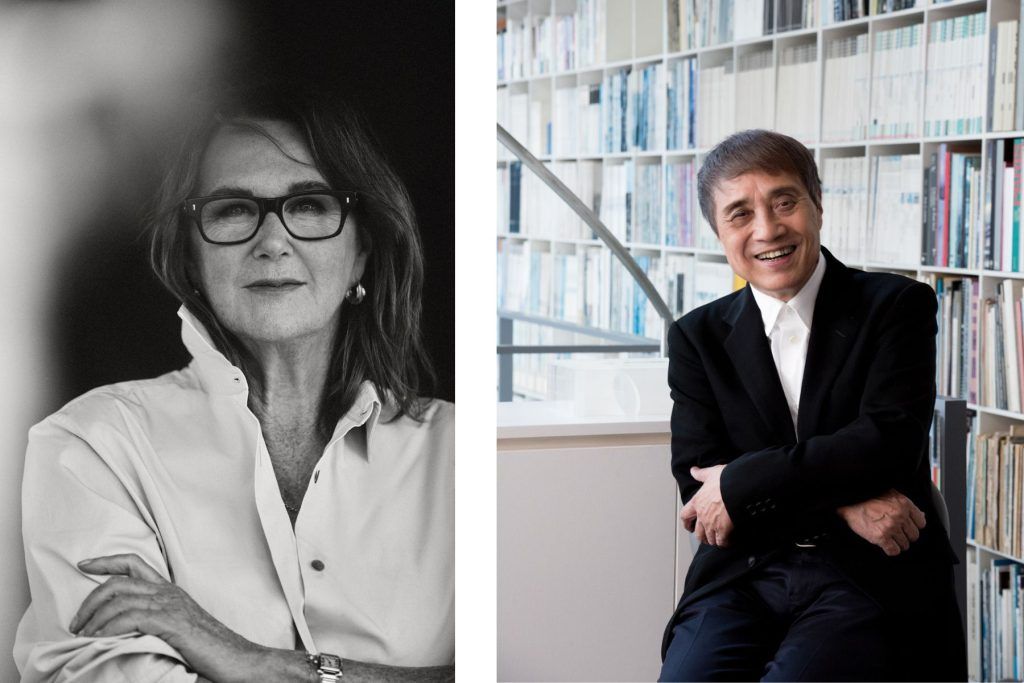
Thanks to hefty grants from Milgrom’s eponymous foundation, over the past decade a series of world-leading architects have been invited to design an experimental pavilion that will serve as the venue for a calendar of free cultural events—everything from theatrical performances and cultural talks, to kids’ educational workshops and fashion shows—over the Aussie summer. (Check out the current schedule here.) Beyond the brief that the structure should provide shelter, and ideally be movable to a permanent location after its five-month tenure in Queen Victoria Gardens ends, the architects are given carte-blanche to let their creativity run rampant.
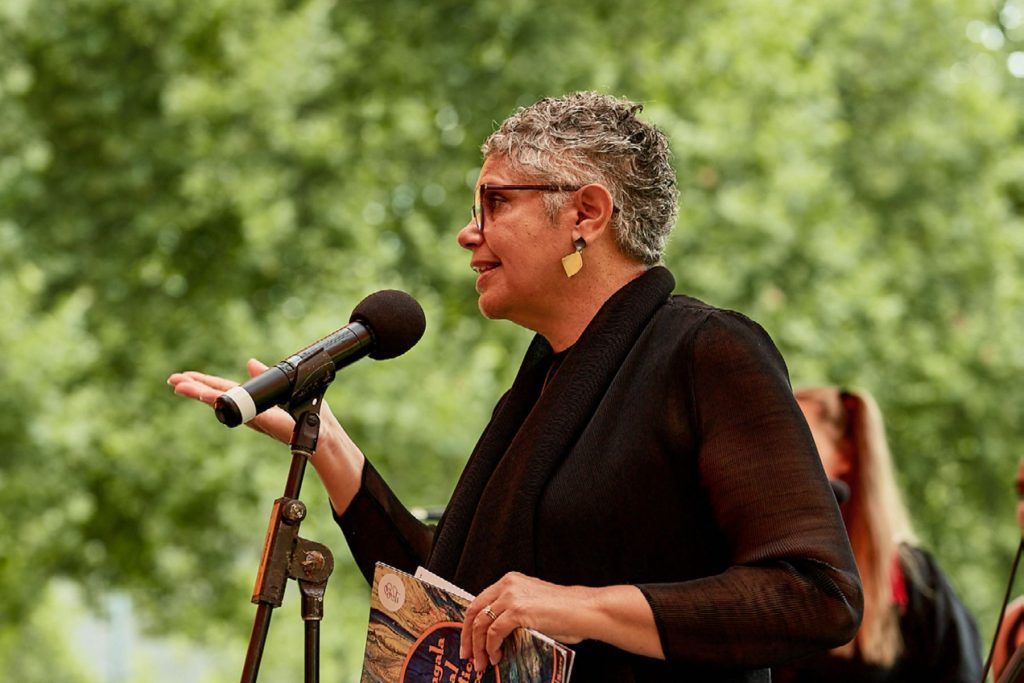
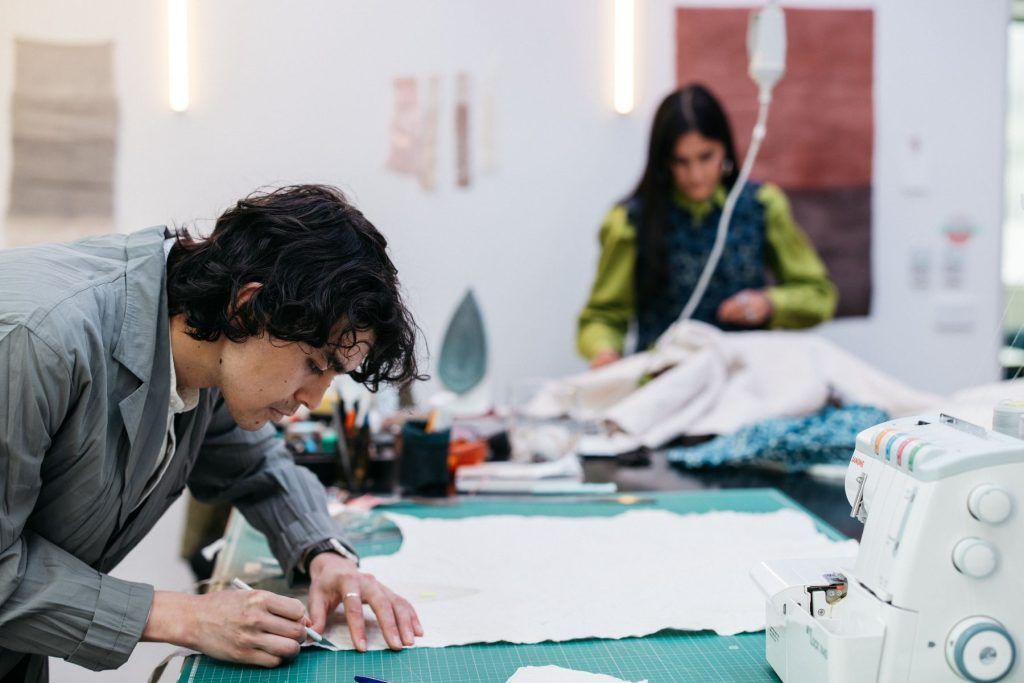
Previous pavilions have been designed by international luminaries including Rem Koolhaas, Bijoy Jain, Carme Pinos, and leading Australian architects Glen Murcutt and Sean Godsell. The new MPavilion is the first building by Pritzker-prizewinner Tadao Ando to be erected in Australia, and is a textbook example of his genius in contrasting stark, angular, grey concrete structural forms with the lush wabi-sabi of nature. In approaching the project, Ando tells T+L, “Melbourne has abundant forests and greenery, so I considered how the architecture could harmonize with the surrounding environment.”
It was a trip to another of Australia’s cities that provided Ando with a major architectural epiphany, he explains. “When I first visited Australia in the 1980s and saw the Sydney Opera House, I thought, ‘This is architecture.’ I realized that experiencing different cultures through architecture and wanting to create something new, even within a completely different cultural context, could be a powerful force,” he says.
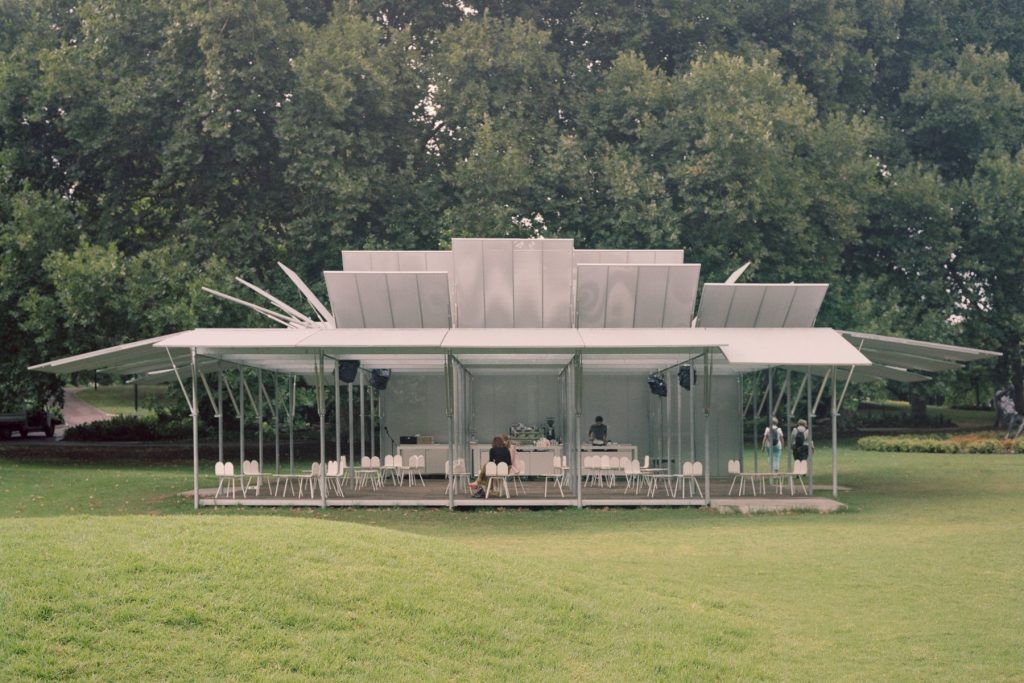
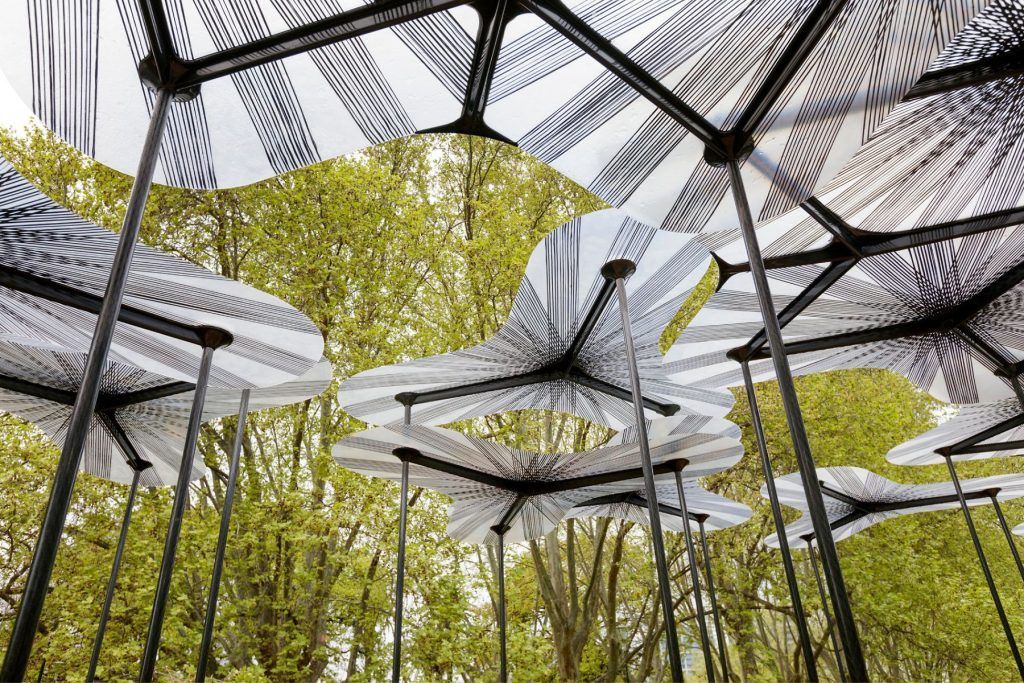
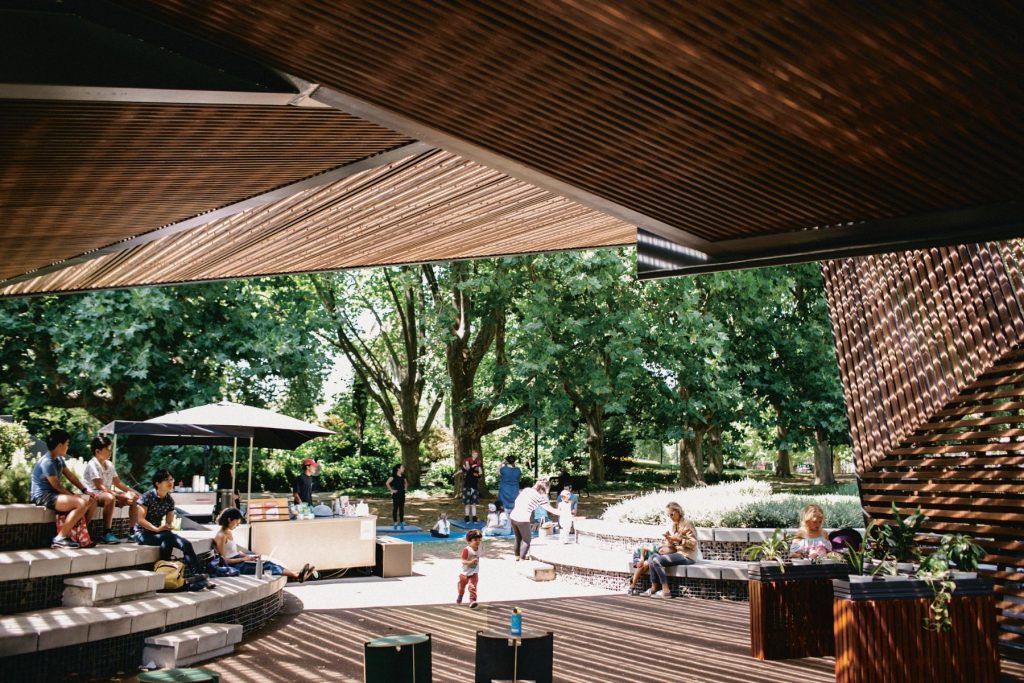
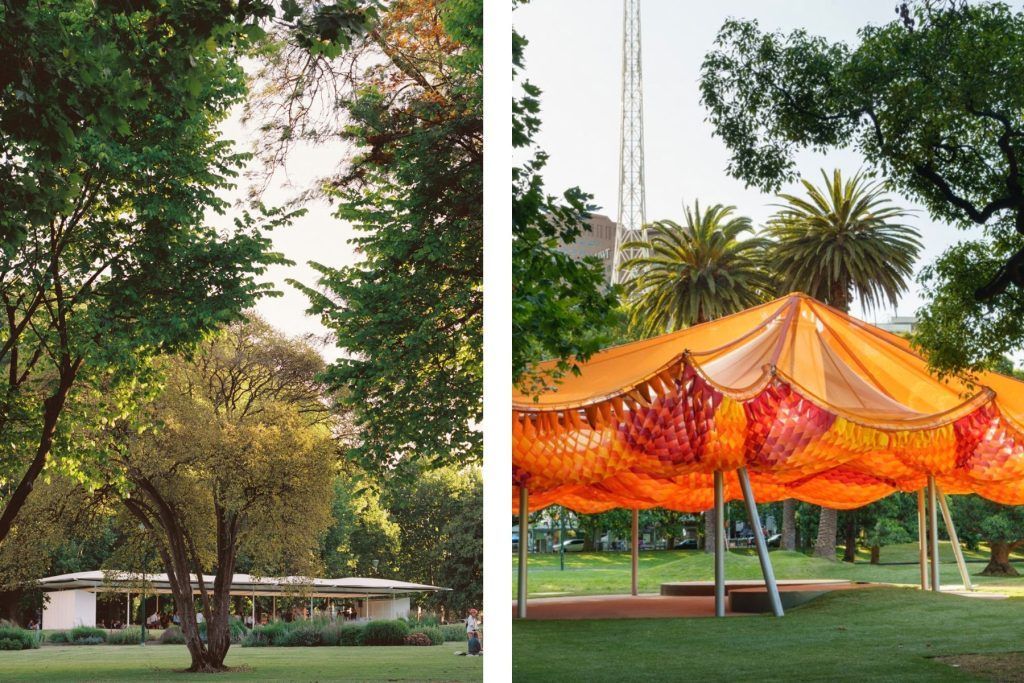
Globally, Ando says, “I found new discoveries and inspirations in all Le Corbusier’s architecture I have visited in person.” Asked to choose his favorite of these, Ando replies, “My choice would be the Ronchamp Chapel. During my second visit, I encountered a scene of a mass. In the space where intense light pours down, I witnessed people standing shoulder to shoulder, praying with one heart. That scene has become my original image of architecture as a ‘place where people gather.’ It is a scene I have been pursuing to this day.”
Nevertheless, the building that Ando has found most awe-inspiring over the years is not something contemporary, as one might guess of such an ultra-modern architect. Rather, it’s a structure that dates back around 1,400 years. “The Pantheon in Rome is, for me, an example of perfect harmony in architecture,” Ando says. “The purest geometric forms and the natural light imbues the space with life. For me, spatial typology is defined only by the volume and orientation of light. I have always believed that the wall is an extremely important element to expose light. This imbues life into architecture.”
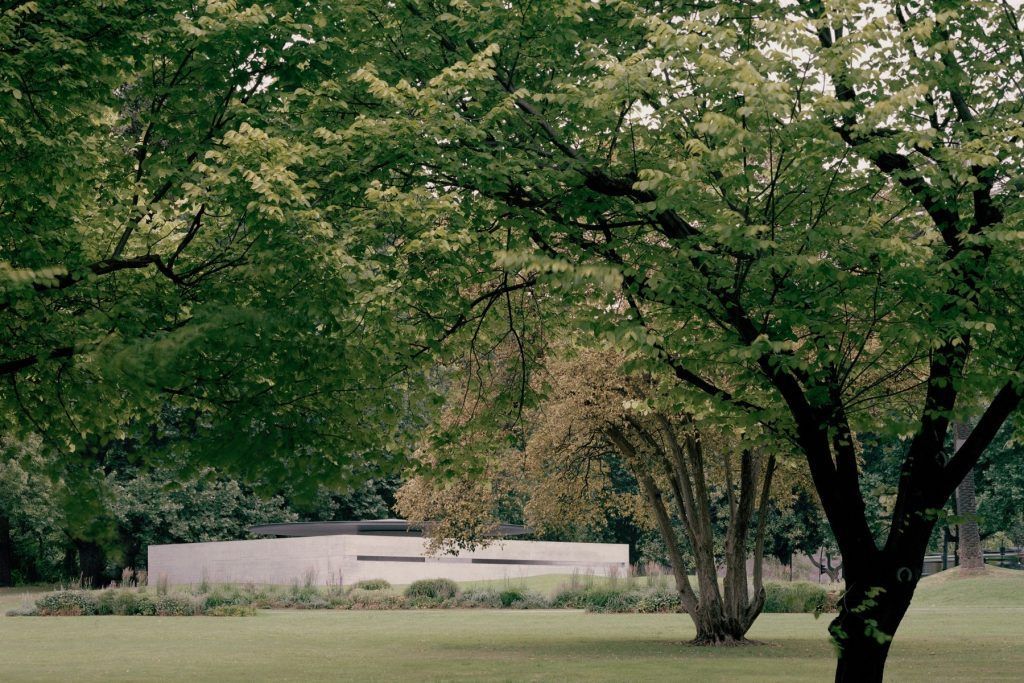
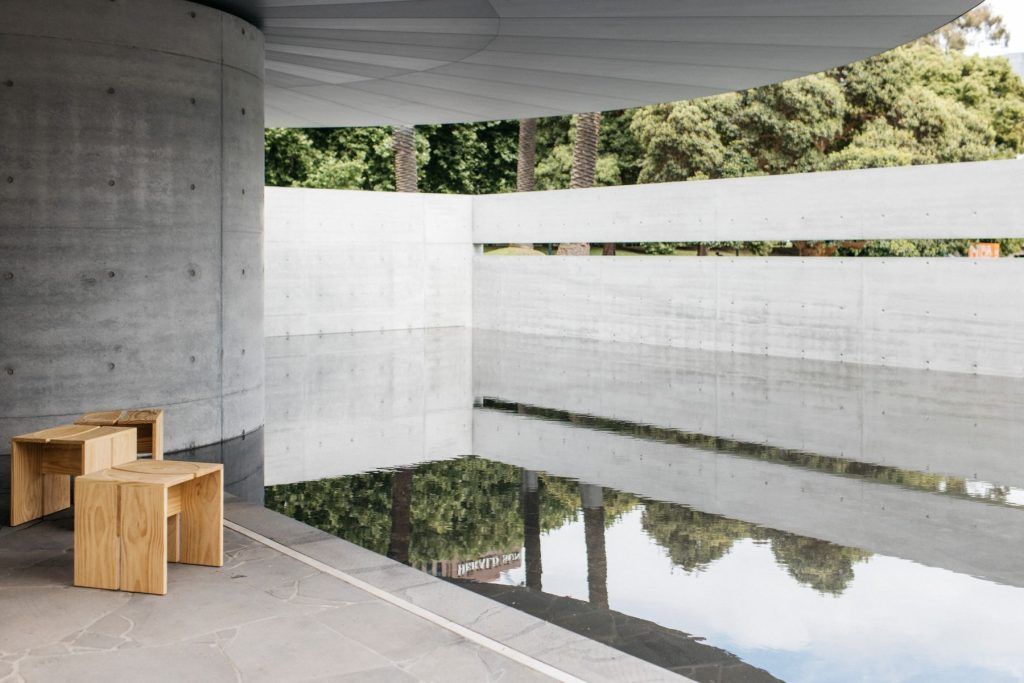
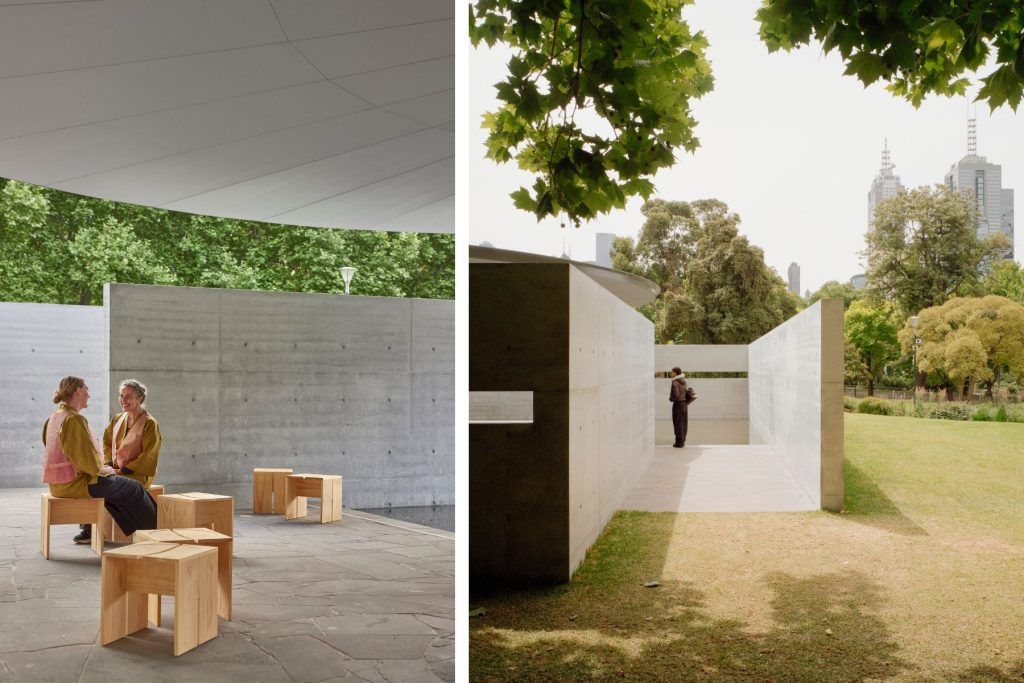
If you’re visiting Melbourne in the coming months, take time to visit Ando’s MPavilion. It looks beautiful in photographs, but it’s only when you’re physically present inside this space that you’ll experience the full effect of its inspired interplay of shadow, reflections, and artful framing of blue skies and greenery. There’s something about it that brings a sense of calm and invites quiet contemplation. That church-like atmosphere Ando’s long been chasing? He’s achieved it here.
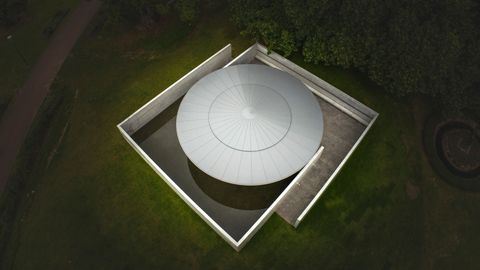

Visit the Queen Victoria Gardens to encounter Tadao Ando’s visionary design for MPavilion 10. Drop into one of the free events, purchase a coffee and a snack from a kiosk or relax and unwind in the Gardens.
mpavilion.org; cultural programming at MPavilion 10 by Tadao Ando runs through March 28, 2024.

